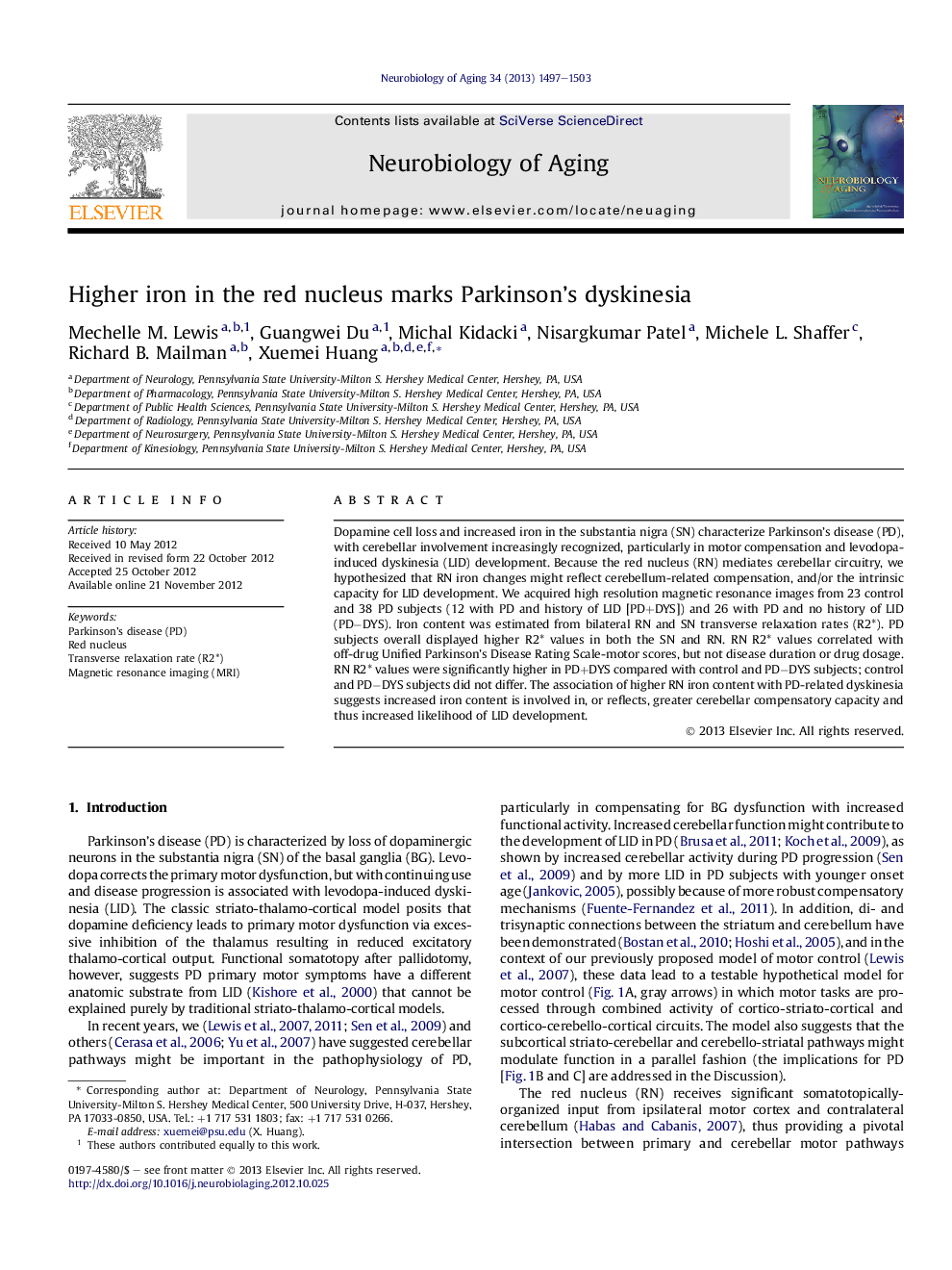| Article ID | Journal | Published Year | Pages | File Type |
|---|---|---|---|---|
| 6807498 | Neurobiology of Aging | 2013 | 7 Pages |
Abstract
Dopamine cell loss and increased iron in the substantia nigra (SN) characterize Parkinson's disease (PD), with cerebellar involvement increasingly recognized, particularly in motor compensation and levodopa-induced dyskinesia (LID) development. Because the red nucleus (RN) mediates cerebellar circuitry, we hypothesized that RN iron changes might reflect cerebellum-related compensation, and/or the intrinsic capacity for LID development. We acquired high resolution magnetic resonance images from 23 control and 38 PD subjects (12 with PD and history of LID [PD+DYS]) and 26 with PD and no history of LID (PDâDYS). Iron content was estimated from bilateral RN and SN transverse relaxation rates (R2*). PD subjects overall displayed higher R2* values in both the SN and RN. RN R2* values correlated with off-drug Unified Parkinson's Disease Rating Scale-motor scores, but not disease duration or drug dosage. RN R2* values were significantly higher in PD+DYS compared with control and PDâDYS subjects; control and PDâDYS subjects did not differ. The association of higher RN iron content with PD-related dyskinesia suggests increased iron content is involved in, or reflects, greater cerebellar compensatory capacity and thus increased likelihood of LID development.
Related Topics
Life Sciences
Biochemistry, Genetics and Molecular Biology
Ageing
Authors
Mechelle M. Lewis, Guangwei Du, Michal Kidacki, Nisargkumar Patel, Michele L. Shaffer, Richard B. Mailman, Xuemei Huang,
